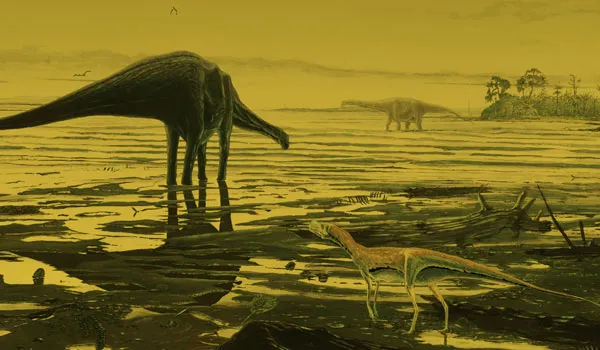Researchers from the University of Edinburgh found the dinosaur tracks preserved in layers of rock, which would once have been at the bottom of a shallow, salt-water lagoon.
The footprints have been identified as those of the plant-eating Sauropods – a distant relative of the better-known dinosaur species Brontosaurus and Diplodocus, and are thought to be around 170-million-years-old.
Fossils from the mid-Jurassic period are incredibly rare, and this recent discovery makes the Isle of Skye the biggest dinosaur spot in Scotland, and is the first time Sauropod tracks have been found on Scottish soil.
According to the researchers, this discovery helps fill an important knowledge gap in the evolution of the huge, lock-necked animals, which were the biggest of the dinosaurs.
Additionally, the trackways provide evidence that Sauropods spent a lot of time in coastal areas and shallow water, and were not just land dwellers as previous research has suggested.

An artist impression of Sauropods/Photo credit: Jon Hoad
Dr. Steve Brusatte, from the University of Edinburgh, who led the expedition said: “The new tracksite from Skye is one of the most remarkable dinosaur discoveries ever made in Scotland. There are so many tracks crossing each other that it looks like a dinosaur disco preserved in stone.
“By following the tracks you can walk with these dinosaurs as they waded through a lagoon 170-million-years ago, when Scotland was so much warmer than today.”
Dr Tom Challands of the School of GeoSciences, who took part in the expedition and research, said: “This find clearly establishes the Isle of Skye as an area of major importance for research into the mid-Jurassic period.
“It is exhilarating to make such a discovery and being able to study it in detail, but the best thing is this is only the tip of the iceberg. I'm certain Skye will keep yielding great sites and specimens for years to come.”
The findings of the expedition have been published in the Scottish Journal of Geology.

